Reviews
La mariée était en noir
François Truffaut
France/Italy, 1968
Credits
Review by Cullen Gallagher
Posted on 08 April 2010
Source MGM World Films DVD
In François Truffaut’s adaptation of The Bride Wore Black, Jeanne Moreau plays Julie Kohler — the ultimate femme fatale. Turning the noir paradigm upside down, Julie is no longer just another long-legged obstacle in the path of a heroic detective. Instead, the femme fatale and detective-figure are collapsed into a single entity. Julie is on a mission to hunt down and kill the five men she blames for the death of her husband. Emotional trauma has given way to hyper-rationality. Her systematic search is an attempt to inscribe reason on an unreasonable world in which one’s spouse can be murdered, seemingly at random, on the steps of the chapel only seconds after the vows were spoken. In this amoral universe, Julie is neither hero nor villain; in fact, none of the characters in the film can be described in such clearly defined dichotomies. This poses a unique challenge, not only in terms of our sympathies (with whom do they lie?) but also of rationalization (why is Julie committing the murders, and is it justifiable?). Many of Truffaut’s artistic choices in adapting the source novel by Cornell Woolrich can be seen as attempts to work out these issues.
Throughout the 1940s and 1950s, Woolrich was one of the leading names of mystery fiction. After a series of unsuccessful attempts at writing “literary” novels in the 1920s, he moved into the pulp magazines, writing for Detective Fiction Weekly, Dime Detective, and Black Mask (where Dashiell Hammett and Raymond Chandler had also got their start). In his full-length crime novels, Woolrich stuck close to the style he developed in the pulps: taut suspense yarns with a brooding, mournful atmosphere. The Bride Wore Black, published in 1940, was his first novel in this new vein, and it solidified his reputation for years to come.
For the most part, Truffaut appears to stick close to Woolrich’s original design. The film, like the novel, is broken up into five segments: one for each of Julie’s intended victims. We are thrown into the plot without privileged access to Julie’s psychology or her plans: her true purposes are only slowly revealed as she enacts them with cold, removed precision. Moreau has always had an alluring indifference about her, and it lends itself perfectly to Julie’s character. The blank face belies no inner thoughts, while her frown has the uncanny ability to attract us while keeping us at a distance. This is exactly the strategy she uses to lure her male victims, none of whom recognize her though her steadily shifting disguises.
However, Truffaut does diverge significantly from his source material. Despite being a classic of the American mystery genre, Woolrich’s novel has one significant flaw. (Note: Those who don’t want to learn the ending of Woolrich’s novel may want to skip ahead to the next paragraph now.) The twist ending pivots on an extremely improbable coincidence that ultimately undermines Julie’s entire mission by revealing that her victims were, in fact, innocent of murder. Moreover, Julie knew that they weren’t responsible for her husband’s death and concocted this revenge fantasy as a way of coping with her grief. The ordered world she thought she was creating suddenly vanishes, and unrelenting chaos and confusion return.
Truffaut does away with this revelation in the movie, and in ironing out the plot details he restores a degree of narrative logic to the story, making it much more believable. However, by fixing some of the novel’s problems, Truffaut not only forgoes the book’s original subversion (one of its most unique characteristics), he also simplifies the morality of the story. In a way, I admire Truffaut’s daring to take what was already a minimal novel and pare it down even further. At the same time, there is something about the last-minute surprises in the original novel — complications that come from left field and knock you in the head — that may not be plausible, but ultimately convey the nightmarish unpredictability of life that is so central to Woolrich’s paranoid worldview.
For all their flaws, Woolrich sympathized with his male characters — probably because, like many of them, he was also a sexually frustrated, melancholic recluse who locked himself up in a hotel room for much of his life. But Truffaut is merciless with the men in his film. His contempt for their perversity is unmistakable, and he offers no remorse for their deaths. The first records the sound of his fiancée’s legs crossing; the second plasters his wall with girly pictures; the third has no sympathy for his wife or her supposedly ill mother; the fourth is an obese, crooked car salesman; and the fifth is an egotistical artist who proclaims, “When I’m in shape I can tell a woman’s measurements within an inch” and “I demand a lot of vulgarity in my women.” This emphasis on the male fetishization on women, missing from the novel, shows Truffaut’s indebtedness to the Master of Suspense, Alfred Hitchcock (whose Rear Window was also based on a Woolrich story). Not only was The Bride Wore Black released only two years after Truffaut’s book-length interview with the director, but the narrative themes and visual motifs, in particular, have a decidedly Hitchcockian flavor. The use of Hitchcock’s frequent composer, Bernard Herrmann, only further emphasizes the connection between the two filmmakers.
As with Truffaut’s previous pulp adaptation of David Goodis’ Down There (which became Shoot the Piano Player), there are gains and losses for fans of the original novel. The added gags and formal playfulness of Shoot the Piano Player, however wonderful in their own right, are out of place in Goodis’ downtrodden gutter. Similarly, The Bride Wore Black is less an adaptation than an interpretation. Despite all of Truffaut’s subtle-but-significant departures from Woolrich, the result is a technically near-flawless suspense film. The smooth mechanics of the plot never reveal more than is necessary, keeping exposition to a minimum and anticipation at a maximum. There are a handful of shots from the film that stand out as some of the most memorable of Truffaut’s career: an immobile long-take of a man on a hotel floor, slowly dying of poison;1 a tracking shot of a child’s ball that follows it into the bushes, and then out again to reveal Julie waiting outside her next victim’s home — a shot whose dread and anxiety is so linked to the duration and camera movement that one can’t help but smile; and, of course, the chilling, final sequence, in which the success or failure of Julie’s final kill occurs off-screen, audible to us only through evocative echoes. Such formal mastery would make even the most diehard Woolrich fan acknowledge that, despite having taken some things away from the story, Truffaut has certainly added many great touches as well. The overall movie may reflect more of Hitchcock’s clean and precise style of suspense than Woolrich’s pulp ethos, but when taken on its own terms, The Bride Wore Black is a finely crafted movie.
- This scene is the movie’s most Hitchcockian moment — it recalls the extended death-by-oven scene from Torn Curtain — and was Hitchcock’s own favorite. He wrote in a letter to Truffaut: “I especially liked the scene of Moreau watching the man who had taken poison Arak dying slowly. I think my particular sense of humour might have taken them a little further so that Moreau could have picked up a cushion and put it under his head so that he could die with more comfort.” Antoine de Baecque and Serge Toubiana. Truffaut: A Biography, 228. ↩
More Love on the Run: The Films of François Truffaut
-

Les Mistons
1957 -
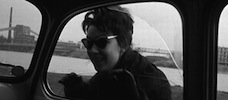
Une histoire d’eau
1958 -
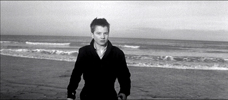
The 400 Blows
1959 -
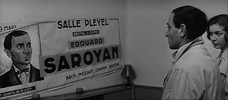
Shoot the Piano Player
1960 -
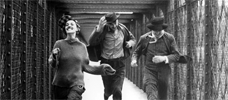
Jules and Jim
1962 -
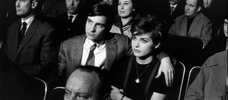
Antoine and Colette
1962 -
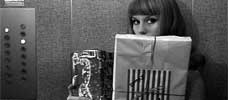
The Soft Skin
1964 -
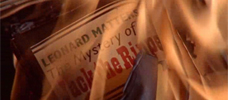
Fahrenheit 451
1966 -
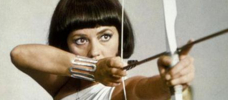
The Bride Wore Black
1968 -
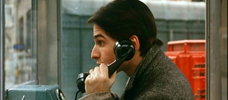
Stolen Kisses
1968 -
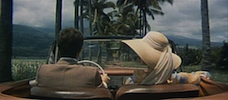
Mississippi Mermaid
1969 -
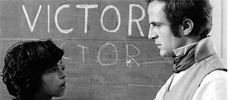
The Wild Child
1970 -
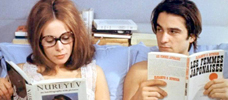
Bed and Board
1970 -
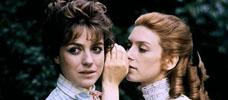
Two English Girls
1971 -
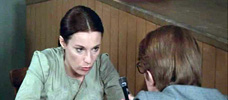
Such A Gorgeous Kid Like Me
1972 -
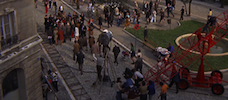
Day for Night
1973 -
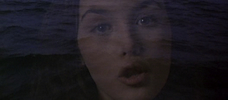
The Story of Adele H.
1975 -
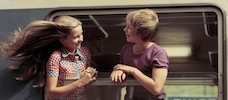
Small Change
1976 -
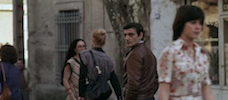
The Man Who Loved Women
1977 -
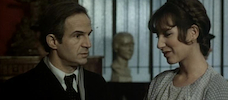
The Green Room
1978 -
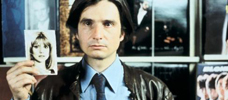
Love on the Run
1979 -
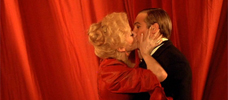
The Last Metro
1980 -
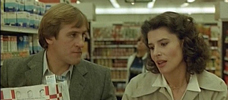
The Woman Next Door
1981 -
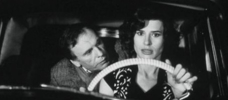
Confidentially Yours!
1983
We don’t do comments anymore, but you may contact us here or find us on Twitter or Facebook.



